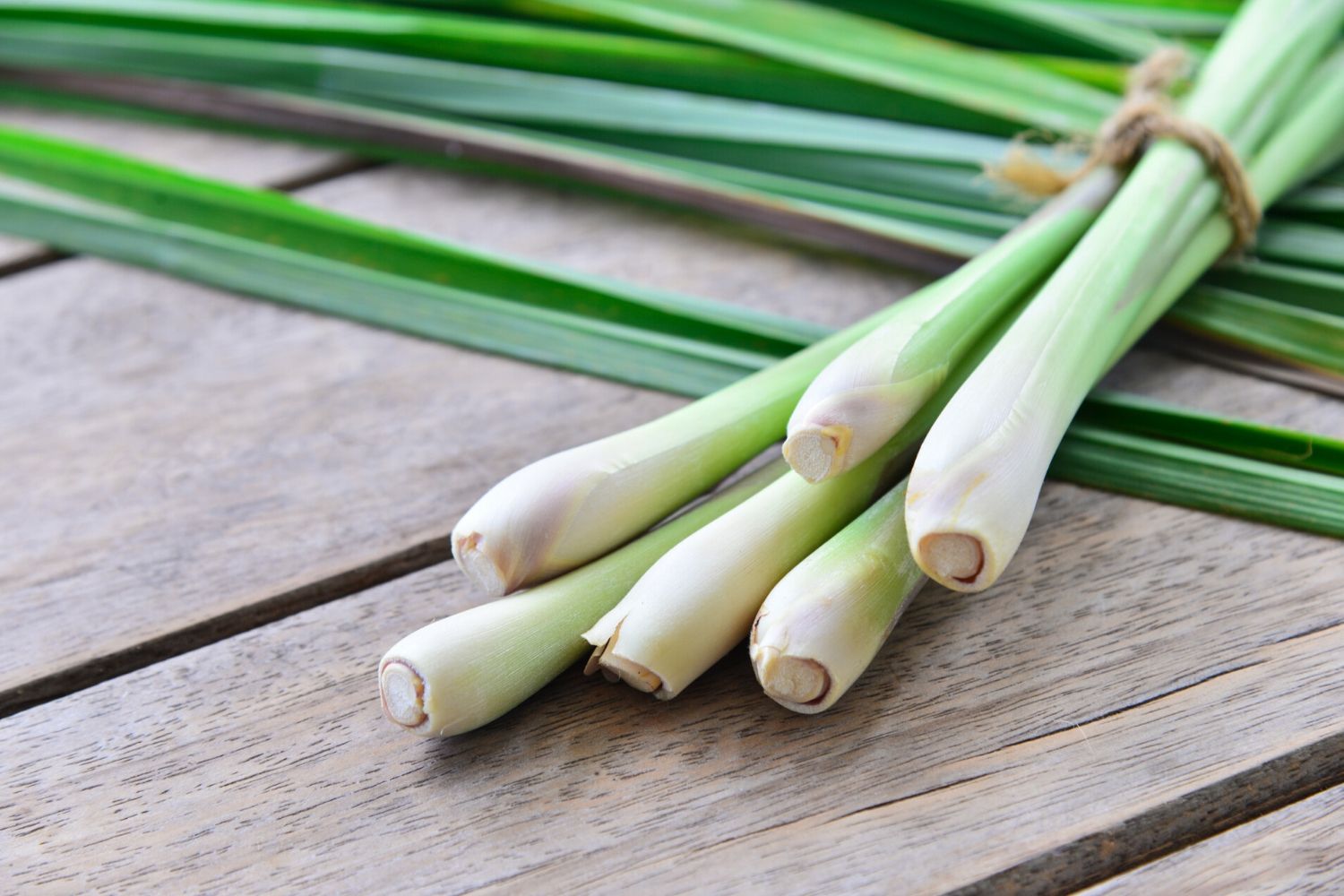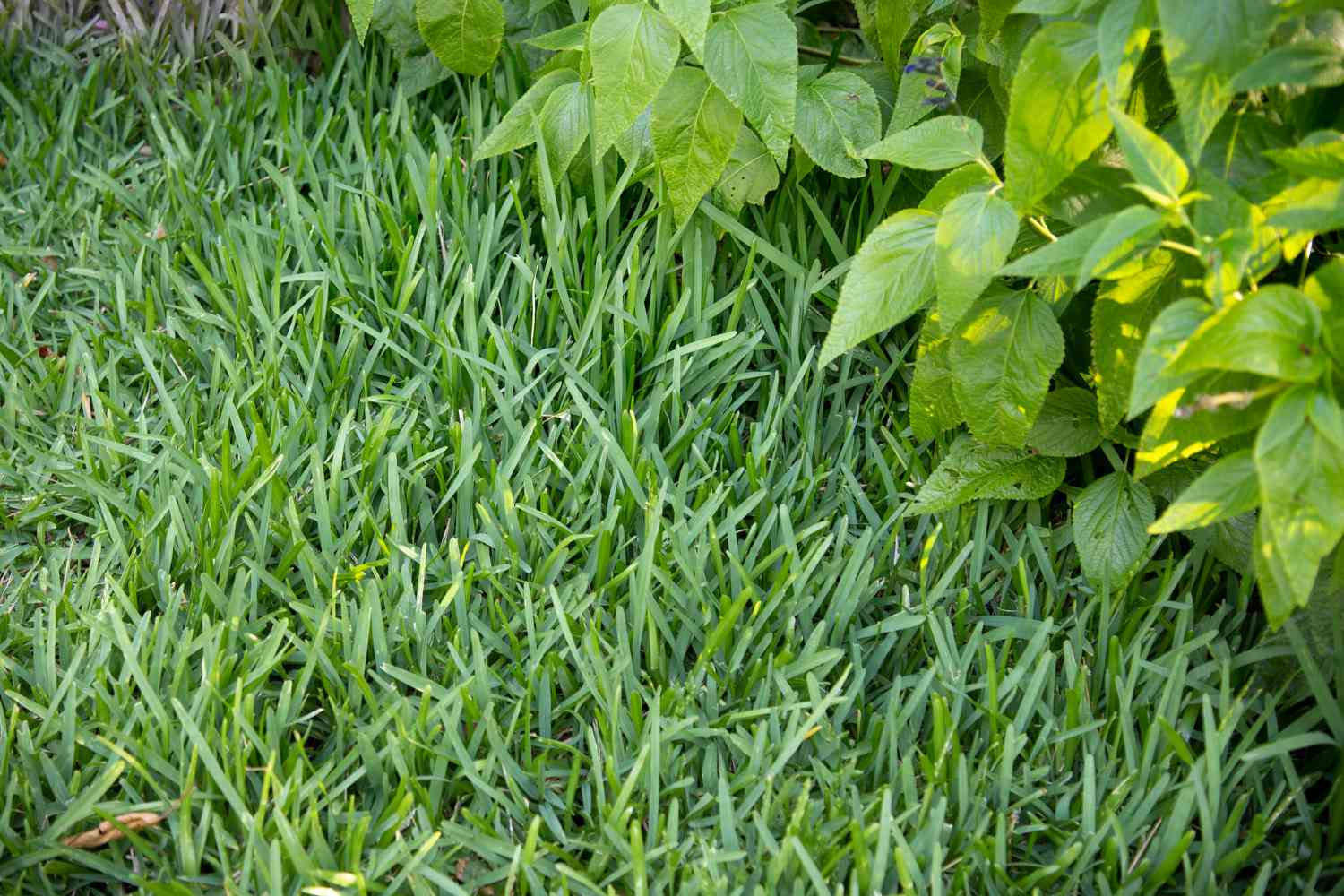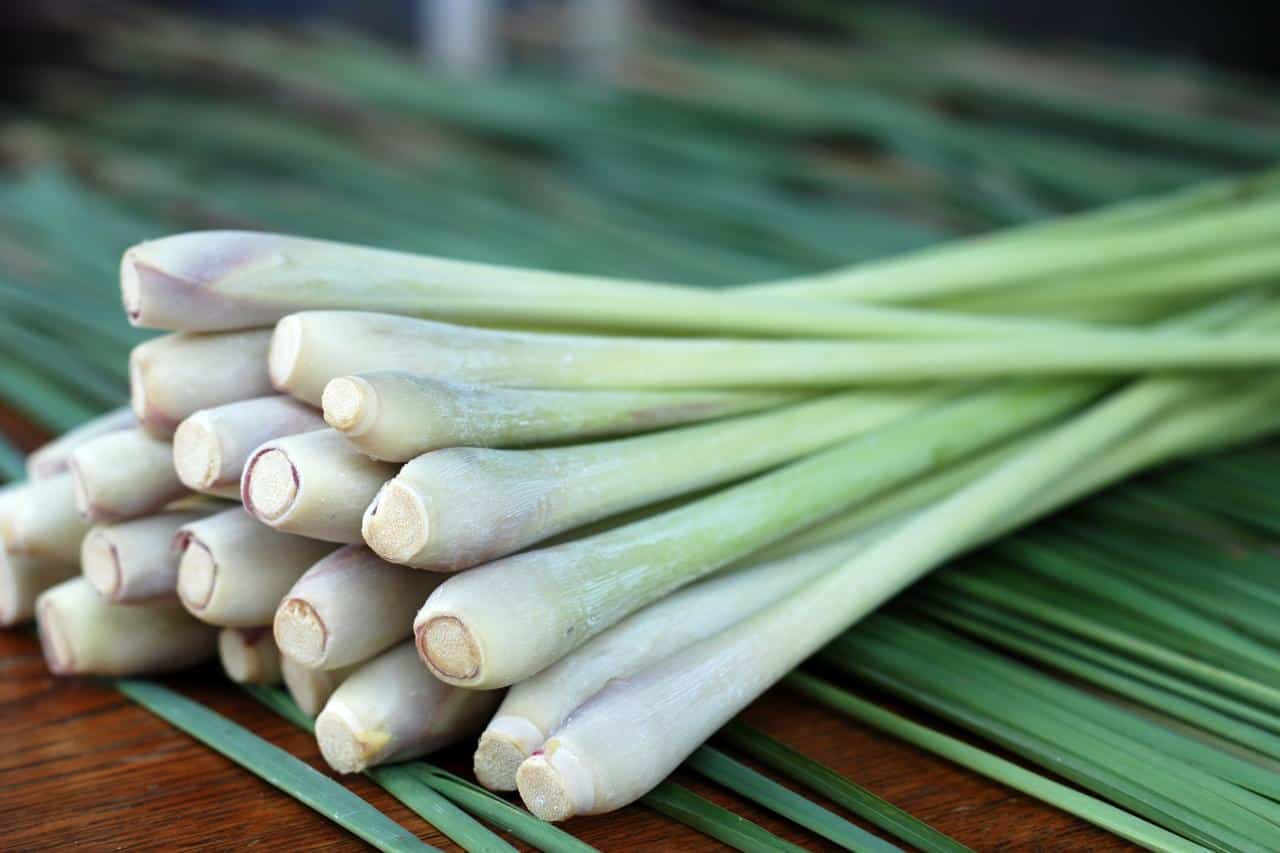Home>Gardening & Outdoor>Landscaping Ideas>What Is A Sedge Grass


Landscaping Ideas
What Is A Sedge Grass
Modified: September 2, 2024
Discover the benefits of sedge grass in landscaping and get creative landscaping ideas using sedge grass to enhance your outdoor space. Explore the versatility and beauty of this low-maintenance landscaping option.
(Many of the links in this article redirect to a specific reviewed product. Your purchase of these products through affiliate links helps to generate commission for Storables.com, at no extra cost. Learn more)
Introduction
Welcome to the world of sedge grass, where beauty meets functionality in the realm of landscaping. Sedge grass, often referred to simply as sedge, is a versatile and visually appealing plant that has earned its place as a beloved landscaping element. Whether you are an avid gardener, a landscaping enthusiast, or someone who simply appreciates the natural allure of outdoor spaces, understanding the intricacies of sedge grass can elevate your appreciation for this remarkable plant.
In this comprehensive guide, we will delve into the captivating world of sedge grass, exploring its definition, characteristics, types, uses, and essential tips for cultivation and maintenance. By the end of this journey, you will have gained a profound understanding of sedge grass and its profound impact on the world of landscaping.
Key Takeaways:
- Sedge grass, with its unique triangular stems and vibrant colors, is a versatile and low-maintenance landscaping option that adds visual interest and helps manage waterlogged areas.
- From erosion control to providing wildlife habitat, sedge grass offers both aesthetic appeal and environmental benefits, making it a valuable addition to sustainable landscaping designs.
Read more: What Is Ryegrass
Definition of Sedge Grass
Sedge grass, scientifically classified under the genus Carex, is a member of the Cyperaceae family, which encompasses over 2,000 species. Unlike traditional grasses, sedges are known for their unique triangular stems and distinctive seed heads, setting them apart in the plant kingdom. These perennial plants are often found in moist or wet environments, thriving in areas where many other plants struggle to survive.
One of the defining features of sedge grass is its remarkable adaptability, making it a popular choice for landscaping projects in various climates and soil conditions. With its diverse range of species, sedge grass presents an array of colors, textures, and sizes, providing landscapers with ample options to create visually captivating and environmentally beneficial outdoor spaces.
What sets sedge grass apart from conventional lawn grass is its preference for moist soil, making it an excellent choice for areas with poor drainage or consistently damp conditions. This unique characteristic not only adds an aesthetic dimension to landscaping but also serves a practical purpose in managing waterlogged areas and preventing soil erosion.
Characteristics of Sedge Grass
Sedge grass possesses a myriad of distinctive characteristics that contribute to its allure and functionality in landscaping. Understanding these traits is essential for appreciating the plant’s versatility and incorporating it effectively into outdoor spaces.
- Triangular Stems: One of the most recognizable features of sedge grass is its triangular stems, which set it apart from traditional grass species. This unique structural attribute adds visual interest and texture to landscaping designs, creating a dynamic and engaging aesthetic.
- Varied Heights: Sedge grass species exhibit diverse height ranges, with some varieties growing in compact clumps close to the ground, while others reach impressive heights, making them suitable for ornamental borders and focal points in garden beds.
- Adaptability: Sedge grass is renowned for its adaptability to different soil types and moisture levels. This resilience makes it a valuable asset in landscaping projects, as it can thrive in challenging environments where other plants struggle to survive.
- Distinctive Seed Heads: The seed heads of sedge grass are visually striking, often boasting intricate and eye-catching patterns. These unique reproductive structures add ornamental value to outdoor spaces, especially when incorporated into naturalistic garden designs.
- Color Variations: Sedge grass species exhibit a wide array of colors, ranging from vibrant greens to golden hues and variegated patterns. This diversity allows landscapers to introduce captivating color schemes and create visually compelling arrangements within gardens and landscapes.
- Low-Maintenance: Many sedge grass species require minimal maintenance, making them an attractive choice for landscaping projects. Their ability to thrive with little intervention contributes to sustainable and eco-friendly garden designs.
These characteristics collectively position sedge grass as a versatile and visually captivating element in landscaping, offering ample opportunities for creative expression and environmental enhancement.
Types of Sedge Grass
The world of sedge grass encompasses a diverse array of species, each with its unique attributes and visual appeal. From compact ground covers to towering ornamental varieties, sedge grass offers a wide selection to suit various landscaping needs and design preferences.
Here are some notable types of sedge grass:
- Carex Morrowii (Japanese Sedge): This popular sedge species is prized for its graceful arching foliage and variegated color patterns, making it a sought-after choice for adding texture and visual interest to garden borders and woodland landscapes.
- Carex Oshimensis (Evergold Sedge): With its striking gold and green variegated foliage, this sedge variety brings vibrant color and year-round appeal to garden beds and containers, serving as an eye-catching accent in outdoor spaces.
- Carex Comans (New Zealand Hair Sedge): Known for its fine, cascading foliage resembling delicate strands of hair, this sedge species adds a soft and ethereal quality to rock gardens, slopes, and container plantings, creating a whimsical and naturalistic ambiance.
- Carex Testacea (Orange New Zealand Sedge): Characterized by its coppery-orange foliage that intensifies in the autumn, this sedge variety offers a warm and inviting presence in landscapes, particularly when utilized for mass plantings and ornamental borders.
- Carex Pensylvanica (Pennsylvania Sedge): This low-growing sedge forms dense, lush mats of foliage, making it an excellent choice for ground cover in shaded areas and woodland gardens, where it thrives in moist, well-drained soil.
These are just a few examples of the diverse sedge grass species available to enrich landscaping projects. Whether you seek compact ground covers, architectural accents, or vibrant color displays, the world of sedge grass offers an abundance of options to elevate the visual appeal and ecological value of outdoor environments.
Sedge grass is a type of grass that thrives in wet areas, such as marshes and swamps. It is important for stabilizing soil and providing habitat for wildlife.
Uses of Sedge Grass
Sedge grass serves a multitude of purposes in landscaping, offering both aesthetic and functional benefits that contribute to the creation of visually captivating and environmentally sustainable outdoor spaces. Whether employed as ornamental features, erosion control elements, or wildlife habitat enhancers, sedge grass plays a pivotal role in shaping diverse landscapes.
Here are some key uses of sedge grass in landscaping:
- Ground Covers: Low-growing sedge species are commonly utilized as ground covers to create lush and textured carpets in shaded areas, woodland gardens, and naturalistic landscapes. Their ability to thrive in moist soil and partial shade makes them valuable components of visually appealing ground cover designs.
- Erosion Control: Sedge grass, with its dense root systems and adaptability to moist environments, is an effective erosion control tool. By stabilizing soil and preventing runoff, certain sedge species contribute to the preservation of landscapes and the protection of waterways.
- Wetland Restoration: Given their natural affinity for wet conditions, sedge grass species are instrumental in wetland restoration projects. Their presence helps enhance biodiversity, provide wildlife habitat, and contribute to the ecological balance of wetland ecosystems.
- Accent Plantings: Ornamental sedge grass varieties are often used as accent plantings in garden beds, borders, and containers, adding textural interest, color contrasts, and architectural flair to landscape designs.
- Wildlife Habitat Enhancement: Sedge grass provides valuable habitat and food sources for various wildlife species, including birds, insects, and small mammals. Its role in supporting biodiversity and ecological resilience underscores its significance in sustainable landscaping practices.
- Green Infrastructure: In urban and suburban settings, sedge grass contributes to green infrastructure by aiding in stormwater management, improving water quality, and promoting environmental sustainability within built environments.
By harnessing the diverse uses of sedge grass, landscapers and garden enthusiasts can create dynamic, resilient, and visually enchanting outdoor environments that harmonize with the natural landscape and support ecological vitality.
Read more: What Is The Grass
How to Grow and Care for Sedge Grass
Cultivating and maintaining sedge grass in outdoor spaces requires attention to specific growing conditions and care practices to ensure optimal health and visual appeal. Whether you are incorporating sedge grass into a garden, naturalistic landscape, or wetland restoration project, following these essential guidelines can help you achieve successful growth and long-term vitality for these versatile plants.
Here are key steps for growing and caring for sedge grass:
- Site Selection: Choose a planting site that aligns with the moisture preferences of the specific sedge species you intend to grow. Whether it’s a well-drained area for dry-loving sedges or a moist, low-lying spot for those that thrive in wet conditions, selecting the right location is crucial for their establishment and growth.
- Soil Preparation: Amend the soil as needed to ensure it provides an ideal growing medium for sedge grass. Incorporate organic matter to improve soil structure and fertility, promoting healthy root development and overall vigor.
- Planting: When planting sedge grass, space the individual plants according to their mature spread, ensuring ample room for them to flourish without overcrowding. Water thoroughly after planting to settle the soil and provide initial hydration.
- Watering: While sedge grass is known for its adaptability to different moisture levels, providing consistent moisture, especially during the establishment phase, is crucial. Monitor soil moisture and water as needed to support healthy growth, particularly during dry spells.
- Maintenance: Regularly remove any dead or damaged foliage to maintain the plant’s appearance and encourage new growth. Additionally, dividing clump-forming sedges every few years can help rejuvenate the plants and prevent overcrowding.
- Fertilization: In nutrient-poor soils, applying a balanced, slow-release fertilizer in spring can support sedge grass growth. However, avoid excessive fertilization, as sedges generally thrive in lean soil conditions.
- Winter Care: For cold-hardy sedge species, providing a layer of mulch in late fall can help protect the plants during winter and promote healthy regrowth in the following spring.
By adhering to these guidelines and tailoring care practices to the specific requirements of the chosen sedge grass species, you can cultivate thriving and visually captivating displays of sedge grass in your outdoor spaces, enriching the landscape with their unique charm and ecological contributions.
Conclusion
As we conclude our exploration of sedge grass, it becomes evident that this remarkable plant transcends its botanical classification to emerge as a cornerstone of modern landscaping. With its diverse array of species, captivating characteristics, and multifaceted uses, sedge grass offers an invaluable canvas for creative expression and environmental stewardship in outdoor environments.
From the elegant arching foliage of Carex morrowii to the vibrant variegation of Carex oshimensis, sedge grass presents a tapestry of textures, colors, and forms that enrich landscapes with natural beauty and ecological functionality. Its adaptability to various growing conditions, including moist and shaded areas, positions sedge grass as a resilient and versatile component of sustainable landscaping designs.
Embracing sedge grass in landscaping endeavors not only fosters aesthetic appeal but also contributes to vital ecological functions such as erosion control, wildlife habitat enhancement, and stormwater management. Its role in promoting biodiversity and environmental resilience underscores its significance in the pursuit of harmonious and sustainable outdoor spaces.
As gardeners, landscapers, and nature enthusiasts continue to seek innovative and eco-conscious approaches to outdoor design, sedge grass stands as a beacon of inspiration, offering a harmonious blend of visual allure, practical utility, and ecological value. By integrating sedge grass into our landscapes with care and creativity, we can cultivate environments that celebrate the inherent beauty of nature while nurturing the intricate tapestry of life that thrives within it.
In the ever-evolving tapestry of landscaping, sedge grass remains a timeless and indispensable thread, weaving together the elements of beauty, resilience, and environmental stewardship to create outdoor spaces that resonate with vitality and purpose.
Frequently Asked Questions about What Is A Sedge Grass
Was this page helpful?
At Storables.com, we guarantee accurate and reliable information. Our content, validated by Expert Board Contributors, is crafted following stringent Editorial Policies. We're committed to providing you with well-researched, expert-backed insights for all your informational needs.















0 thoughts on “What Is A Sedge Grass”